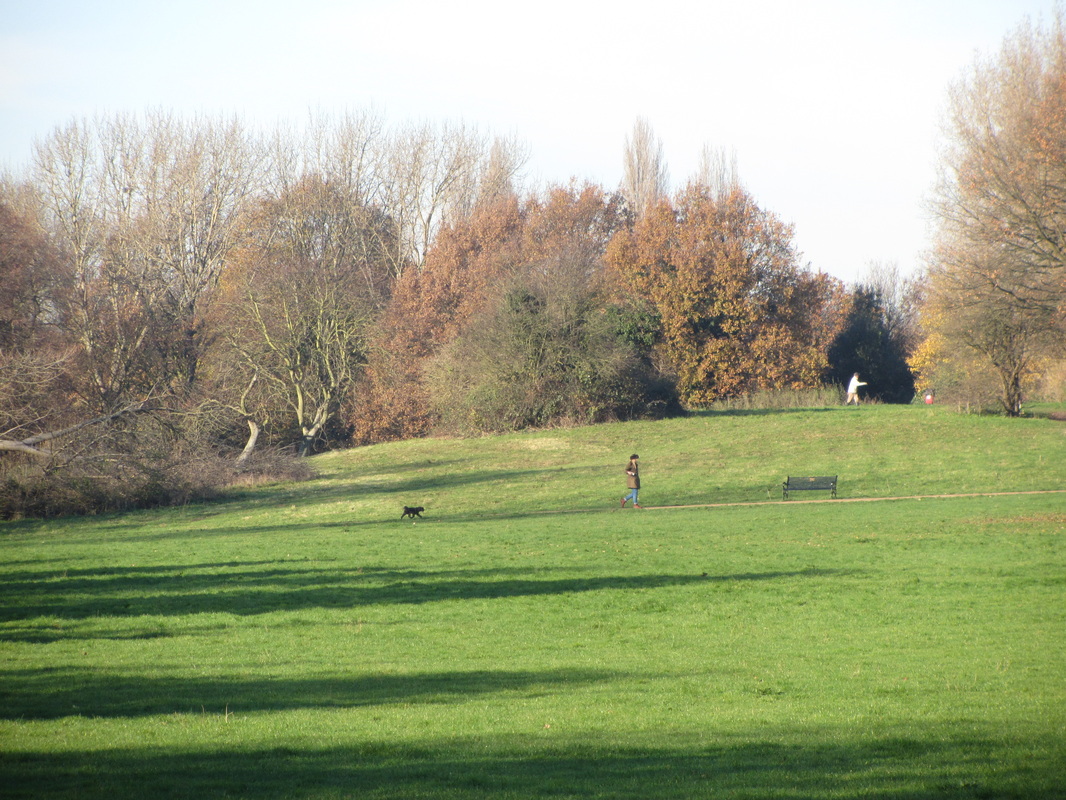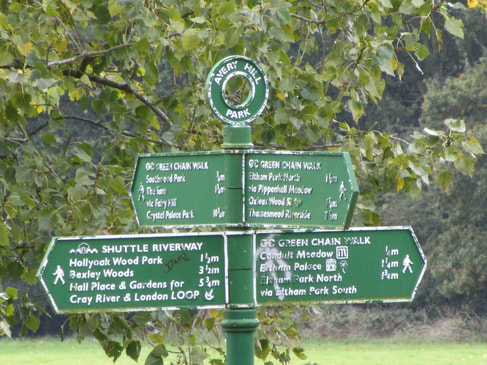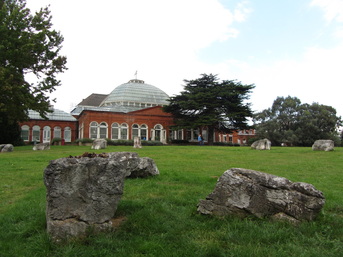WHAT'S IN AVERY HILL PARK?
|
Avery Hill Park is a large suburban park with a rural aspect. It comprises undulating areas of ‘amenity grassland’ (i.e. mown) and ‘conservation grassland’ (i.e. left to grow and mown in the late summer). Various mature tree specimens are to be found throughout the site. There are also areas of young woodland and scrub. The headwaters of the River Shuttle flow south, then east, through the park. Amenities include a number of sports pitches, where rugby, hockey, cricket and football are played, a café with indoor and outdoor seating and enclosed dog park, a Multi-use games area, (MUGA) and a recently improved and extended children’s playground and dog-free picnic area.
|
The Green Chain
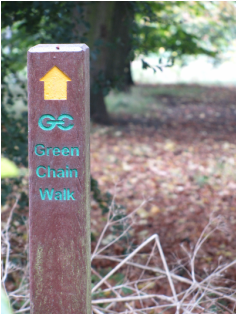
The Green Chain – a pedestrian route linking various public open spaces in the Royal Borough of Greenwich and neighbouring Boroughs - passes through the site.
Avery Hill Park is bordered by Bexley Road to the north and Avery Hill Road to the east. There is a circular Green Chain walk around Avery Hill Park from Bexley Rd/Avery Hill College bus stops 162 and 286. You will see highlights of Avery Hill Park. |
Avery Hill Winter Garden
|
The ‘Winter Garden’ - part of the ‘Avery Hill Campus’ of the University of Greenwich - dominates the skyline when looking from the south.
Read more about the Winter Garden and the Mansion site as well as the Save Avery Hill campaign to ensure continued access to these gems for generations to come. |
Pippenhall Meadow
Pippenhall Meadow, situated to the north of Avery Hill Park, is a medium-sized area of natural
meadowland.
meadowland.
The Conduit Head
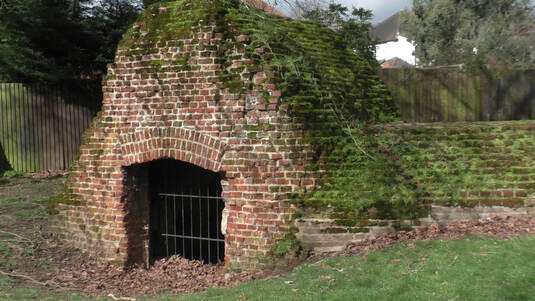
Situated near to Holy Trinity Church, and accessible from Southend Crescent (on a footpath, part of the Green Chain) is a brick conduit house, probably dating from the sixteenth century. It was built to provide a supply of water to nearby Eltham Palace. The structure was recently renovated by English Heritage, having previously been on a ‘Heritage at Risk’ list. It is listed as a ‘Scheduled Monument’. An interpretational panel on site gives more details.
The remains of the old conduit is recorded in R.R.C. Gregory's 'The Story of Royal Eltham' (1909). Gregory describes how the water was originally brought to the reservoir here through wooden pipes from a spring in the Warren [situated to the north of Avery Hill Park and to the north of the Bexley Rd] and from the conduit it was 'conveyed to all the houses of the Crown. It was first conducted to "Step-stile" house and gardens, thence through the Park, supplying on its way the Mansion, thence, by way of what is now the "Chestnuts" it went to the Palace. By means of branches it supplied the old houses about the Court Yard.'
The old conduit was discarded in 1838 when a new conduit was built with iron replacing the wooden ones. Holy Trinity Church was erected in 1889, designed by G L Street.
The remains of the old conduit is recorded in R.R.C. Gregory's 'The Story of Royal Eltham' (1909). Gregory describes how the water was originally brought to the reservoir here through wooden pipes from a spring in the Warren [situated to the north of Avery Hill Park and to the north of the Bexley Rd] and from the conduit it was 'conveyed to all the houses of the Crown. It was first conducted to "Step-stile" house and gardens, thence through the Park, supplying on its way the Mansion, thence, by way of what is now the "Chestnuts" it went to the Palace. By means of branches it supplied the old houses about the Court Yard.'
The old conduit was discarded in 1838 when a new conduit was built with iron replacing the wooden ones. Holy Trinity Church was erected in 1889, designed by G L Street.
